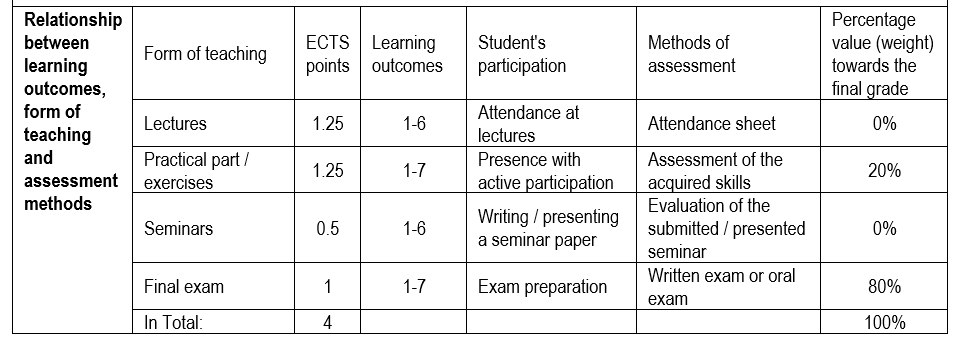Understanding and knowledge of the complexity of intermaxillary relations and the functioning of the stomatognathic system (SGS), knowledge and application of basic gnatological techniques: selection and application of articulators with cheek arch, bite registration, model preparation and placement in the articulator, choice of new occlusion concept.
Gnathological morphology and physiology. Introduction to gnatology (aim and content of the course). Methods of work in gnatology (gnatological diagnostic methods, gnatological methods of treatment and care). Gnathological terminology. and SGS function. Functional (gnathological) antomy of dental contacts. Jaw joint and kinetics in the condylar-disc whole. Neurophysiological background of occlusion. Intercuspid position of the mandible (ICP) tooth on two teeth, dental contacts in IKP in fixed prosthetic occlusion tooth on two teeth). Central relation of the mandible (retruded contact position of the tooth, ligamentous path when closing the mouth, occlusal points in tooth to tooth occlusion, spatial relations between IKP and CR). pathway when closing the mouth and muscle contact position. Physiological rest (clinical concept of physiological rest). Mandibular kinetics: basic and hot movements of the mandible, centric and eccentric positions of the mandible, muscles, jaw joint and movements of the mandible. Boundary movements of the mandible in three planes (sagittal - Posselt diagram, movement of the symphysis and condyle-disc, frontal-working and balancing side condyle-disc wholes, occlusal determinants, horizontal-shape of the boundary movement, direction of the arrow). Types of sliding tooth contacts (bilateral sliding balance, unilateral sliding balance). connections between occlusal determinants). Average values of occlusal determinants. Kinesiological measurements (axiography, electrognatography-COSIG, pantography).
9th semester. II. Fundamentals of gnatological techniques. Historical development of articulators. Articulators and gnatological equipment. Articulator errors. Work with gnatological equipment (cheek arch, bite registration, determination of occlusal determinants, model fixation, occlusion programming). Denar Slidematic Automark gnatological system. Mandibular positions and production of new prosthetic occlusion. Gnatological modeling in wax. Principles of production of new prosthetic occlusion. III. Clinical gnatology. Gnatological examination and methods for determination of occlusal and sliding contacts. Occlusive interference. and instrumental bite analysis. Effects of occlusal interference (occlusal trauma, periodontium and traumatic occlusion). Occlusal parafunctions (night and day bruxism). Craniomandibular disorders. Arthropathy of the jaw joint. Treatment of craniomandibular disorders (Ramfjord occlusal splint, selective grinding). Epidemiology and prevention of craniomandibular disorders.
Required course materials:
- Okeson J.P. Temporomandibularni poremećaji i okluzija. 1. hrvatsko izdanje. Valentić-Peruzović M., ured. hrv. izd. Medicinska naklada, Zagreb. 2008.
Supplemental course materials:
- Wassell R, Naru A, Steele J, Nohl F. Applied Occlusion. Quintessence publishing Co.Ltd. London.2008.
- Ash Jr, M. M, Nelson S.J. Wheeler's Dental Anatomy, Physiology and Occlusion. Elsevier Science, 8th ed., 2002.
- Marion Lj.:Osnove gnatoloških tehnik, Ljubljana, Medicinska fakulteta, Katedra za stomatološko protetiko gnatologija, 1995.
Upon completion of this course, students will be able to:
- To get acquainted with the pathology of occlusion and SGS and its impact on the body;
- List and describe disorders of the temporomandibular joint;
- Compare the function of healthy and pathologically altered SGS;
- List and describe the types and applications of articulators and face bows;
- Describe and show the procedure for determining intermaxillary relations;
- Describe the therapy of temporomandibular disorders with a splint;
- Learn to implement gnatology into a complete dental treatment in all dental branches.



